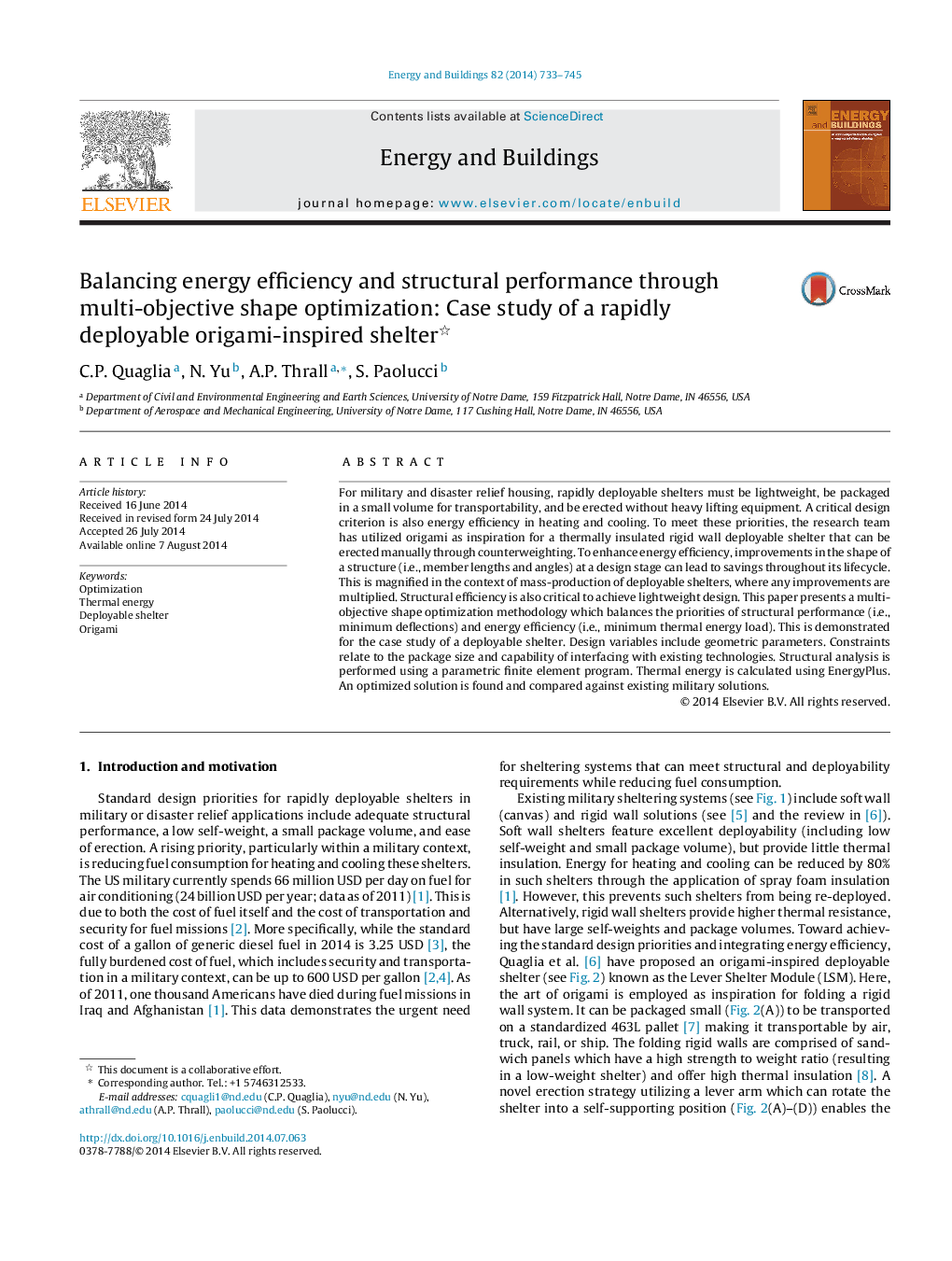| Article ID | Journal | Published Year | Pages | File Type |
|---|---|---|---|---|
| 262711 | Energy and Buildings | 2014 | 13 Pages |
•Shape optimization method for building structural and energy performance is presented.•Method is demonstrated for a rapidly deployable origami-inspired shelter.•Results show improved energy performance compared to existing shelters.
For military and disaster relief housing, rapidly deployable shelters must be lightweight, be packaged in a small volume for transportability, and be erected without heavy lifting equipment. A critical design criterion is also energy efficiency in heating and cooling. To meet these priorities, the research team has utilized origami as inspiration for a thermally insulated rigid wall deployable shelter that can be erected manually through counterweighting. To enhance energy efficiency, improvements in the shape of a structure (i.e., member lengths and angles) at a design stage can lead to savings throughout its lifecycle. This is magnified in the context of mass-production of deployable shelters, where any improvements are multiplied. Structural efficiency is also critical to achieve lightweight design. This paper presents a multi-objective shape optimization methodology which balances the priorities of structural performance (i.e., minimum deflections) and energy efficiency (i.e., minimum thermal energy load). This is demonstrated for the case study of a deployable shelter. Design variables include geometric parameters. Constraints relate to the package size and capability of interfacing with existing technologies. Structural analysis is performed using a parametric finite element program. Thermal energy is calculated using EnergyPlus. An optimized solution is found and compared against existing military solutions.
